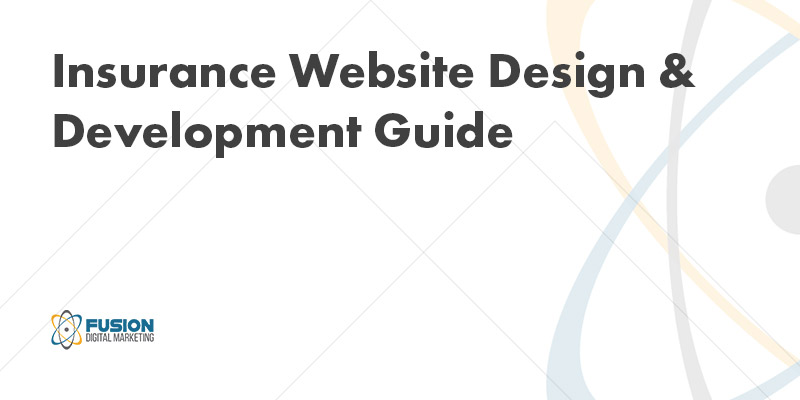As an insurance agency, having a website to serve your customers is expected. Early in the customer journey, users want to compare quotes, and after they sign up, they want to manage their policy online. What was once a luxury for only large carriers is now readily available for agencies to provide to their customers, thanks to technological advancements in recent years.
Providing a website that is simply visually appealing no longer gets the job done; a website needs to be built to convert prospects into customers. The information and design need to entice your users while plentiful conversion opportunities need to be provided, from chat to call or form quotes; different users have different needs.
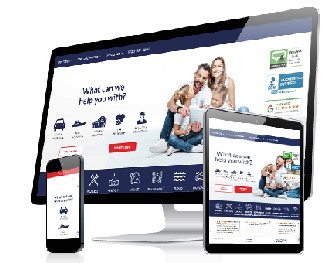
Site Structure
When planning a website, it’s best to keep your navigation and structure simple for the customer and search engines to understand.
Website structures follow either a hierarchical model, a sequential model, a matrix model, or a database model. Insurance agency websites regularly follow a hierarchical model that utilizes silos or sections. The first tier of that model will be the home page, which leads to the second tier of resources that generally starts with:
- Product Pages (Home, Auto, Business, Etc.)
- About Us
- Articles/Blog Posts
- Request a Quote
- Contact Us
Keeping the website organized so each silo contains its respected pages based on topics and user intent, where blog posts are grouped, services pages are grouped, and so forth, will improve user interaction and search rankings.
Pro Tip: Incorporate bread crumbs into your design for user navigation and SEO.
More information on site structures is provided in Adobe’s site structure guide.
Design & UX/CX User Experience
A website reflects your business, often the first and only visual they will have your business. When designing your site, you want it to be visually appealing so that it “wows” your audience, the colors should reflect your business, and you want to design for speed for both the user and for Google as a slow-loading website or hard-to-navigate website will affect your rankings.
The secret to web design is to create a design that a 5-year-old can use; the more intricate the layout, the more customers will get frustrated and ultimately drop out, leading to lower conversion rates and rankings.
Another thing to keep in mind is responsive design. Although pretty standard now, you want your website to look just as good on a cell phone as on a desktop, and it should load as quickly too. It’s also a good idea to build designs that promote micro-interactions to keep the user interacting with the content.
When gathering ideas for your website design, you should review competitors and note the URL and design features you like for the site designer. Gather as much info as possible and relay why you like those features.
Some more advanced design techniques include Neumorphism, Skeuomorphism, Flat and Material Design.
Conversion Optimization
As your website design comes together, a major necessity for success is that the user interface (UI) is optimized for conversions. This means you provide adequate opportunity and influence for your site users to convert into leads through your phone, email, forms, chat, popups, lead magnets, or anything else to capture their information. It’s also important to ask yourself if your offer is appealing. Your insurance policies can have the best rates and services, but if the user can’t find your rates and services, nobody will know.
As with every section of this guide, conversion optimization is a skill that takes time to learn, and covering the topic from end to end would be a book on its own, so to keep this brief, we will touch on some main points to consider when optimizing your website.
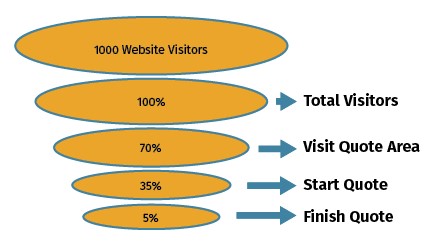
A/B Testing – Researching how your audience reacts to your website is a great asset. Setting up multiple instances of the same page with a single change in design will answer the valuable question of what generates the most sales. Test designs to find what works, from the website to newsletters testing does not stop.
Customer Value Proposition – Without properly relaying to the customer why you are the right choice, they will never know that simple. When the user arrives at your website, they will ask themselves:
- What do you do?
- Why should they care?
- Why should they believe you?
- Where do they begin?
For example, a tagline “Secure your family and finances in 15 minutes or less” with trust badges, social proof, and a great CTA (Call to Action) is a good start.
Create Urgency – When complacent, it helps to give users a nudge in the right direction. Reminding them why they are here and what can go wrong without protection will lead them to create their own urgency. If it’s life insurance, who’s the beneficiary? Should they be left without protection if something were to happen to them?
Trust Badges & Social Proof – Get certified and accredited on-site like Independent Insurance Agents & Brokers of America and NCCI, then show them on the website. Then it’s important to collect reviews on review platforms like Google and Trust Pilot and show that the general public and not just you, think you’re great. Without trust and social proof, it’ll be difficult to beat the competition.
Here are a few certifications, accreditations, review platforms, and trust badges for Insurance agencies to start you off.
- BBB
- Trust Pilot
- Expertise.com
- ThreeBest Rated
- NextDoor
Additional assets, including chat widgets, lead magnets, CTA (Call to Action) assets, and popups (when used appropriately), can increase conversion rates, leads, and ultimately sales.
For more information on conversion optimization, read The User-Centric Approach to Conversion Rate Optimization.
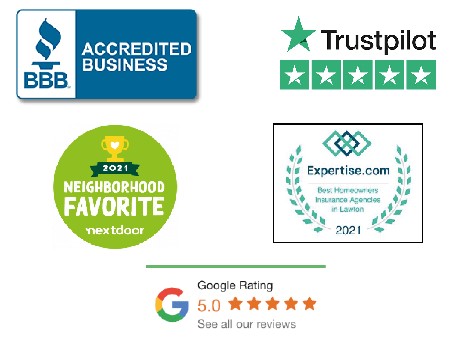
Analytics & Tracking
When thinking of website analytics, many immediately think of Google Analytics because, according to Hotjar, a whopping 74% of professionals use GA. There are many providers, including Adobe Analytics, Clicky, Mixpanel, Matomo, and Similar Web. The purpose of these tools is to track users on your website.
Not only are you tracking the number of users, but you are tracking their activity, location, and time on the page, and sometimes tools like GA can provide demographics and interest.
Additional analytics tools include behavioral analytics, which includes page interaction data that can be used for heat maps.

Heatmap by Hotjar
However you handle your analytics, it’s important to stay within your online privacy laws. The EU has strict GDPR laws, and in the US, for example, California has CCPA.
Why do we use web analytics? Because the data can help us better serve our customers and make educated decisions on website updates to produce more leads and, ultimately, sales.
Popular Analytics tools include:
- Google Analytics
- Similarweb
- Hotjar
- Mixpanel
- Chartbeat
- Clicky
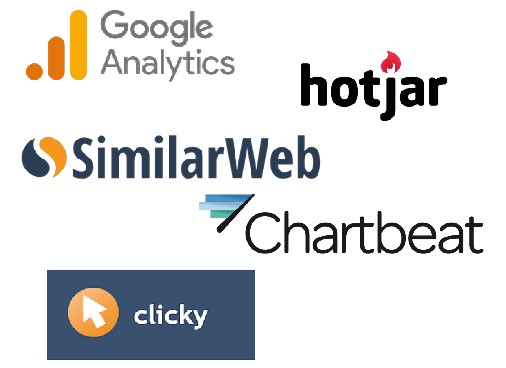
AMS and CRM integrations
Currently, the web and insurance industries are going through a transformation. The new and growing technology of improved APIs, databases, software, and digital services is merging with the old technology (*cough* *cough* EZLynx) to make for better software to be used online and, more importantly, intricate with the software you depend on like your AMS (Agency Management System).
Getting your AMS, rater software, and website to work in harmony can sometimes be challenging because the industry is catching up with today’s technology and many tools. Software like Ezlynx integrate with your rater and website while providing an AMS.
Other options include keeping your popular AMS services like AMS360 and using software like Agency Revolution and AgencyZoom to link to your website lead collection and nurturing, the only issue with technology stacks like this is you risk losing the ability to provide online rate quotes from your rater software.
A digital agency experienced in assembling Insurance marketing stacks makes the job much easier. If you decide to develop your own stack, remember to keep the entire picture in mind. Taking the first software that is pitched to you comes with the risk of losing features, integrations with other software, and, more importantly, a loss of your time.
Here is a list of popular AMS providers:
- EZLynx AMS
- Zywave
- AMS360 (Vertaforce)
- AgencyBloc
- Applied Epic (Applied TAM is old version)
- Jenesis
- HawkSoft
- QQCatalyst
- NextAgency
- Newton Agency System
- Special Agent
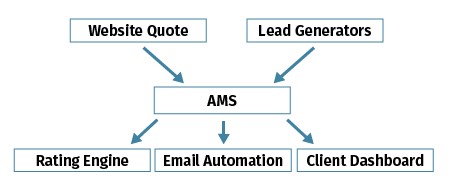
Fusion Digital Marketing is a full-service industry that provides your insurance agency with end-to-end online solutions. Contact us today for a complete analysis of your campaign and proposal for services customized to make your agency succeed in online lead generation.

